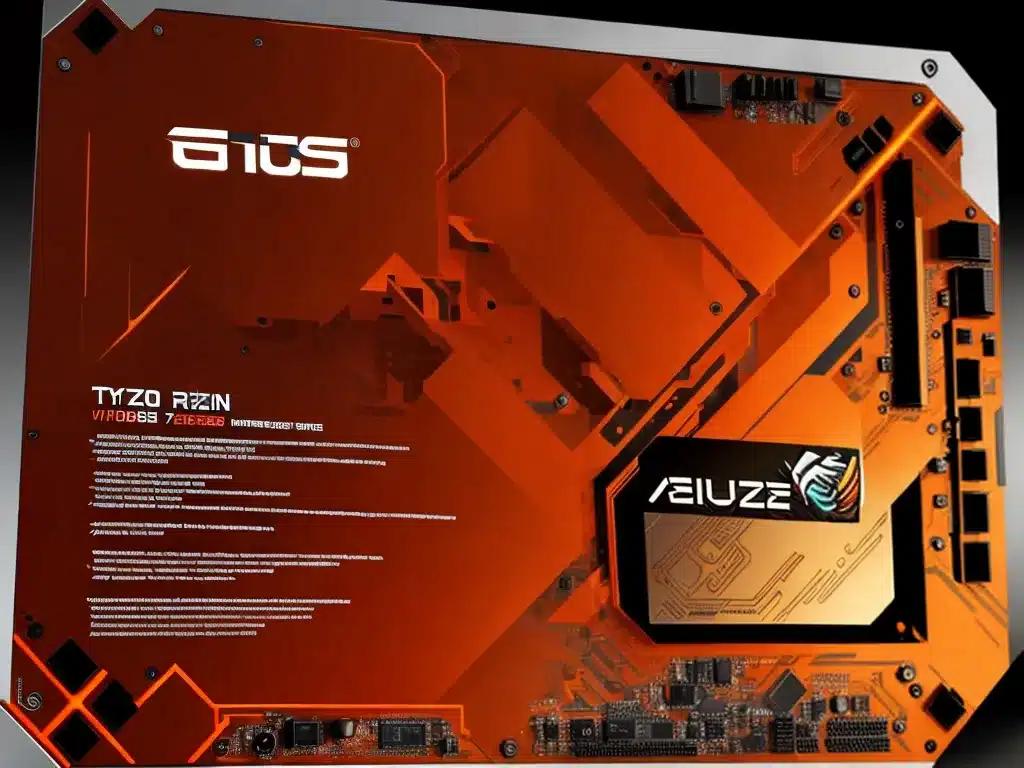The new Ryzen 7000 series processors are here, bringing next-gen 5nm Zen 4 architecture and support for DDR5 memory and PCIe 5.0. To take full advantage of these new capabilities, AMD has introduced the new X670E chipset, requiring a new socket and motherboards.
In this article, I will compare X670E motherboards from the major manufacturers – ASUS, ASRock, MSI, and Gigabyte – looking at their features, design, power delivery, connectivity, and more to help you choose the right one.
Power Delivery & VRM
The Ryzen 7000 CPUs have a 170W TDP, so robust power delivery is essential. Here’s how the X670E boards compare:
-
ASUS ROG Crosshair X670E Extreme – 20+1 teamed power stages, 2 oz copper PCB, microfine alloy chokes, 10K Japanese capacitors. Extreme overclocking focused.
-
ASRock X670E Taichi – 16+2 Dr.MOS power stages, 12K Japanese caps. Aimed at enthusiasts.
-
MSI MEG X670E Ace – 16+2+1 Duet Rail power system with 105A SPS. Optimized for gaming and overclocking.
-
Gigabyte X670E Aorus Xtreme – 18+2 phases with 105A Smart Power Stage. High-end board for overclockers.
The ASUS Extreme takes the crown with its massive 20+1 VRM, but all boards should easily handle the 170W CPUs, with power delivery focused on overclocking.
PCIe Lanes and Storage
With PCIe 5.0 support, the X670E boards offer blazing fast storage:
-
All have at least two PCIe 5.0 x4 M.2 slots for the fastest NVMe Gen 5 SSDs.
-
ASUS and ASRock boards add a PCIe 5.0 x4 slot for add-in cards.
-
The ASUS Extreme also has a DIMM.2 card for two more Gen 5 M.2 drives.
For SATA, most boards have 6-8 ports, with the ASRock Taichi offering a market-leading 10 ports.
If you want the most PCIe 5.0 lanes and slots, the ASUS Extreme is the top choice. But all boards offer strong Gen 5 storage capabilities.
Memory Support
With the new DDR5 memory support, the X670E boards can hit impressive speeds:
-
All boards support DDR5-5200 or higher speeds with overclocking.
-
ASUS and MSI boards are validated for DDR5-6400+.
-
ASUS offers the most comprehensive memory overclocking options and optimizations.
-
Boards have dual channel DDR5 with 4 slots for up to 128GB capacity.
For those wanting to push DDR5 frequencies to the limit, ASUS stands out. But overall the boards are evenly matched for memory support.
Connectivity
For rear I/O, the X670E boards offer:
-
Multiple USB ports with USB 3.2 Gen 2×2 20Gbps, USB 3.2 Gen 2 10Gbps, and USB 3.2 Gen 1.
-
2.5Gb LAN on the ASUS, ASRock and Gigabyte boards.
-
Wi-Fi 6E as standard, with the ASUS Extreme adding Wi-Fi 6E and 10Gbps LAN.
-
HDMI and DisplayPort outputs.
The ASUS Extreme takes the lead with its fast 10Gbps LAN and Wi-Fi 6E, but overall the connectivity is very similar across the top X670E boards.
Pricing
The X670E motherboards have premium pricing, with models starting around $300 and going over $700:
-
ASUS ROG Crosshair X670E Extreme – $799 MSRP
-
ASRock X670E Taichi – $499 MSRP
-
MSI MEG X670E Ace – $599 MSRP
-
Gigabyte X670E Aorus Xtreme – $699 MSRP
The ASRock Taichi provides a good balance of features at the lowest price. But all are premium boards for high-end PC builds.
Verdict
Overall, the X670E motherboards have excellent power delivery, storage, memory support and connectivity for the Ryzen 7000 series.
The ASUS ROG Crosshair Extreme is the top enthusiast choice with its unmatched 20+1 power phases, tons of PCIe 5.0, and leading memory overclocking.
The ASRock X670E Taichi provides great well-rounded specifications at a more affordable price point.
And boards like the MSI Ace and Gigabyte Aorus Xtreme occupy the middle ground with robust designs.
So there are strong options depending on your budget and needs. For most users, I’d recommend the ASRock Taichi or MSI Ace for their combination of features, performance and reasonable prices compared to the premium ASUS and Gigabyte models.













